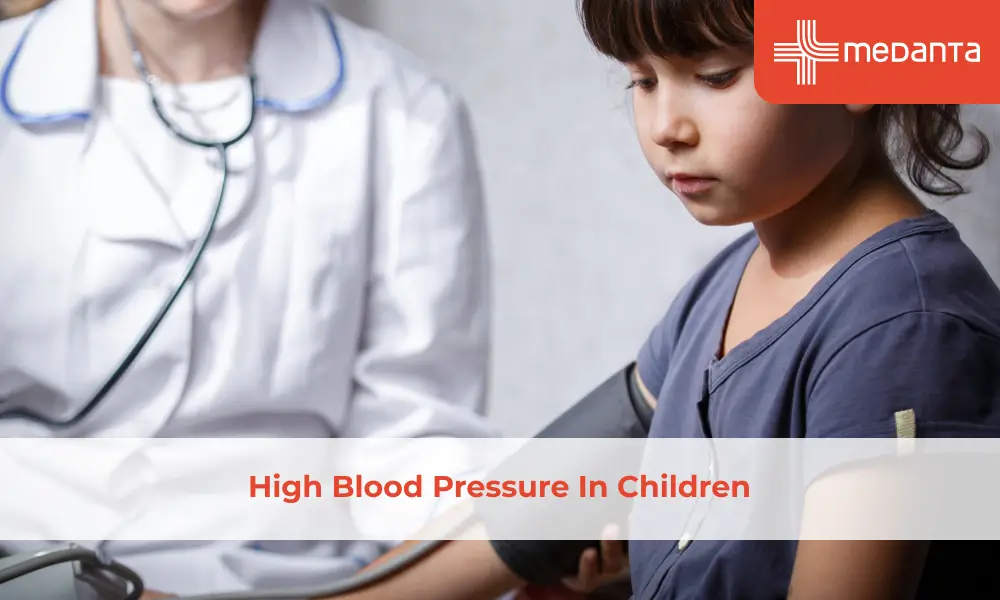High Blood Pressure In Children

Most people believe that high blood pressure or hypertension is a condition that affects only adults or older people. While this may have been true for previous generations, unfortunately, in today’s world, high blood pressure affects people of all ages - including young children.
Globally, the risk of elevated blood pressure among children and adolescents rose by 27 per cent during a 13-year period, making it a growing problem in children - one that needs to be tackled with a proper understanding of its causes, effects, and treatment.
High Blood Pressure in Children
Although many of us will be surprised at the high prevalence of high blood pressure cases in children, it is still a bleak reality. In a child with hypertension, the pressure at which blood flows is too high, resulting in damage to the blood vessels, the heart and other organs.
As adults, we are advised to go for regular health checkups as a result of which we identify any immediate physiological changes in our bodies, without delay. In children, on the other hand, diagnosing and interpreting disease is much trickier. A child’s doctor will have to assess reports based on a variety of factors, including sex, height, and blood pressure reading, to determine whether or not a child has high blood pressure.
What Causes High Blood Pressure In Children?
Hypertension in young children is often related to other health conditions such as heart defects, genetic conditions, kidney disease or hormonal disorders.
In older children, the main cause may be obesity or being overweight. Depending on these conditions, hypertension can be categorized into two types:
Primary Hypertension
Primary or essential hypertension is high blood pressure that has no underlying condition. This type of hypertension occurs mostly in children aged 6 and older. The main risk factors are:Being overweight or obese
A family history of high blood pressure
High cholesterol and triglycerides
Type 2 diabetes or high FBS (fasting blood sugar) level
Secondary Hypertension
This is more common in young children and it is attributed to the following underlying health conditions:Chronic kidney disease
Polycystic kidney disease
Heart issues (Coarctation of the aorta)
Adrenal disorders
Hyperthyroidism
Pheochromocytoma (Tumor in the adrenal gland)
Renal artery stenosis
Sleep disorders (Obstructive sleep apnea)
Medications (Decongestants, oral contraceptives, and steroids)
What Is the Link Between Obesity and Hypertension?
While secondary hypertension is more common in children, the prevalence of primary hypertension is increasing and it is here that the link to obesity is more obvious and ominous. The main risk factors for primary hypertension in children are obesity and a family history of high blood pressure. Out of these, obesity is considered as the primary risk factor for HBP in children. Being obese not only puts a child at a risk for high blood pressure, but it also increases the risk for a range of health problems such as heart disease and diabetes.
The main causes of obesity in children are a combination of too much food, especially processed junk foods and sugary drinks, and too little activity. It becomes important for the parent or caregiver to keep an eye on the quality of food the child consumes and avoid overindulgence in unhealthy snacks and sugary beverages.
Many children do not engage in any physical activity and instead spend hours engaged in sedentary activities like watching television or playing video games. These are two major lifestyle hurdles that parents and their children need to overcome to reduce the risk of hypertension.
How To Treat Hypertension In Children?
Treating primary hypertension or high blood pressure in children is not very different from treating it in adults. Parents should work closely with their child’s doctor to find which treatment plan will work best.
For secondary hypertension, it is important to find out the underlying cause and treat it to control the blood pressure.
Here are some general guidelines to adopt when treating primary hypertension:
Follow a DASH Diet
The Dietary Approaches to Stop Hypertension (DASH) diet plan includes eating less trans fats and more fresh vegetables, fruits, and whole-grain foods. The diet also recommends limiting salt intake which can help lower a child’s blood pressure. Make the diet changes a family affair so that everyone will benefit from these healthy choices and children will feel more motivated to follow the diet.Track Your Child’s Weight
Since being overweight or obese increases the risk of developing high blood pressure, it’s important to ask a child’s doctor to help set goals for losing weight. Following the DASH diet and getting regular exercise can also help in losing weight.Engage in Physical Activity
Parents should limit the amount of time a child spends watching television or playing video games. They can sign them up for a sport or accompany them on daily walks to keep them physically engaged. Instead of simply encouraging children to participate in physical activity, parents should lead by example and be more physically active themselves.Consult A Child Specialist
By working with a health specialist, parents can develop a complete understanding of the problem and develop a comprehensive health plan that will help control high blood pressure. Checking blood pressure as often as recommended by the child’s doctor is crucial to HBP management.






